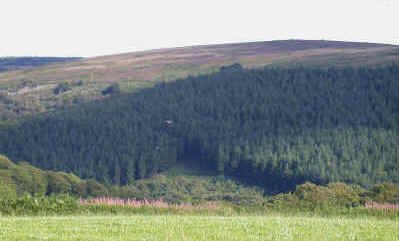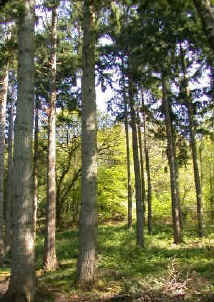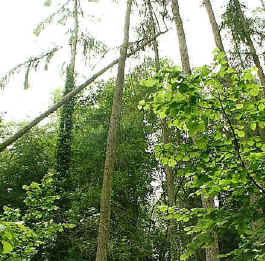Types of Coniferous Woodland

The only conifers which are generally recognised to be native to Britain are Scots Pine, Juniper and Yew. Coniferous woodlands in Britain are mostly planted woodlands (plantations). The vast majority are made up of introduced conifer species. The characteristics of these plantations tend to be determined more by the density of planting of the trees, the amount of thinning which has taken place and the age of the trees than by the actual species of conifer.
One of the main exceptions to this is Larch woods. Because Larches are deciduous and have a loose growth form, they let through more light and are therefore distinctly different to most other coniferous woods.
.
There are only three species of conifer which are generally recognised to be native to Britain. These are Scots Pine, Juniper and Yew. The only one occurring in any quantity is Scots Pine. It is planted for timber production, especially in the less hospitable areas for forestry. It is also a pioneer tree species occurring naturally on similar soils to Birch. These two species may often be found intermixed. Some areas of Pine woodland, particularly in Scotland, may be the remnants of older natural forests. However, these have been considerably added to through planting for forestry. For example, large areas of Scotland are being replanted with Scots Pine of local provenance, in order to recreate the ancient Caledonian Forest. Naturally occurring Pine woods are usually found on acid, sandy soils. If the woods are fairly open, they will often have a heathy field layer of Heather, Bilberry and Bracken. Coniferous woodlands are by and large, planted and managed to remove competing species. Their characteristics therefore often depend more on the density of planting of the trees, the amount of thinning which has taken place and the age of the trees, than on the dominant species of tree making up the woodland. To the layman, one conifer species can also look pretty much like another. As a result, coniferous woodlands tend not to be separately identified by species make-up. However, modern coniferous plantations are also designed and managed to take conservation considerations into account . For example, wide rides may be provided to link areas of natural vegetation, such as heathland, which occur within the plantation. Areas within conifer plantations may also be designated for the planting or retention of native broadleaf trees. Stream banks and gullies in upland conifer forests are now cleared of conifers to allow natural regeneration of native flora. This also reduces the effects of acid rain.
|

